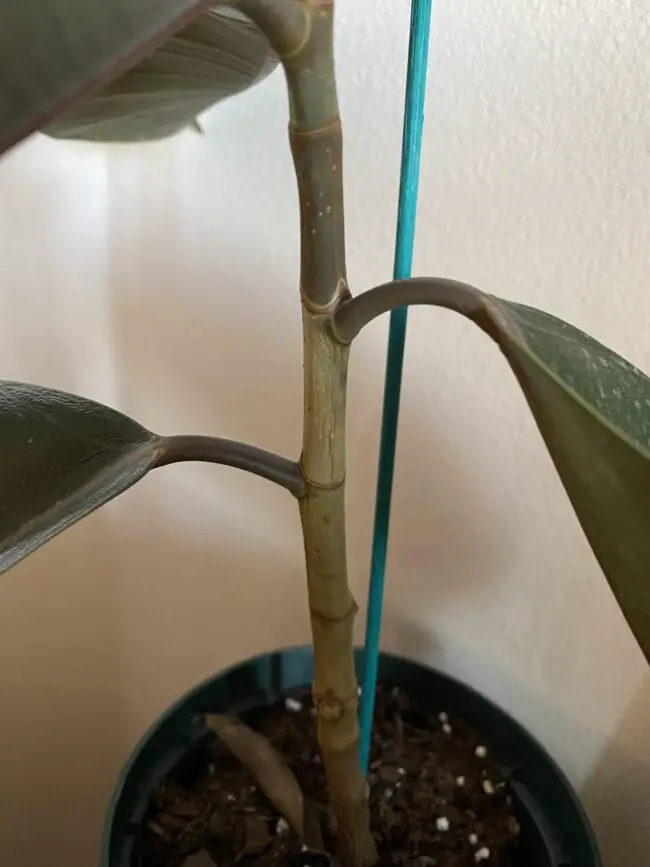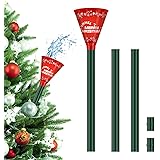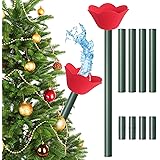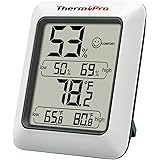Have you noticed that your rubber plant stem is starting to wrinkle? Don’t worry, you’re not alone. Many plant lovers have faced this issue and wondered what it means for the health of their beloved green companion. In this article, we will explore the possible causes of a wrinkled rubber plant stem and provide you with simple solutions to get your plant back on track.
So, if you’re concerned about your rubber plant’s well-being and want to understand why its stem is wrinkled, keep reading. Let’s dive into the world of rubber plants and find out how to keep them thriving!
Rubber Plant Stem Wrinkled
A rubber plant, also known as Ficus elastica, is a popular indoor plant that can add beauty and vibrancy to any space. However, one common issue that plant owners may encounter is a wrinkled stem. This can be concerning, as it may indicate underlying problems with the health of the plant.
In this article, we will explore the causes of a rubber plant stem becoming wrinkled and discuss potential solutions to help restore its vitality.
Causes of a Wrinkled Rubber Plant Stem
There are several factors that can contribute to a rubber plant stem becoming wrinkled. Understanding these causes can help plant owners identify and address the underlying issues effectively. Here are some possible reasons why a rubber plant stem may develop wrinkles:
- Underwatering: One of the most common causes of a wrinkled rubber plant stem is underwatering. When a rubber plant does not receive enough water, it can lead to dehydration and cause the stem to shrivel and develop wrinkles.
- It is important to maintain a regular watering schedule and ensure that the plant receives adequate moisture.
- Overwatering: On the flip side, overwatering can also result in a wrinkled rubber plant stem. Excess water can lead to root rot, which affects the plant’s ability to absorb nutrients. As a result, the stem may start to wrinkle. It is crucial to strike a balance and avoid overwatering the rubber plant.
- Improper Drainage: Inadequate drainage in the plant’s pot can contribute to both underwatering and overwatering issues. If the roots of a rubber plant sit in waterlogged soil for an extended period, it can hinder proper nutrient absorption and cause the stem to become wrinkled. Ensuring that the pot has drainage holes can help prevent this problem.
- Inadequate Lighting: Rubber plants thrive in bright, indirect light. Insufficient exposure to light can weaken the plant’s overall health, potentially leading to a wrinkled stem. Placing the rubber plant near a window or providing it with artificial grow lights can help maintain optimal light levels.
- Lack of Humidity: Rubber plants prefer a moderate to high level of humidity. When the air around the plant is too dry, it can cause the stem to lose moisture and become wrinkled. Increasing humidity levels through various methods, such as using a humidifier or placing a tray of water near the plant, can help prevent this issue.
- Nutrient Deficiency: A lack of essential nutrients, such as nitrogen, potassium, or magnesium, can adversely affect the overall health of a rubber plant. This deficiency can manifest in the form of a wrinkled stem. Regularly fertilizing the plant with a balanced houseplant fertilizer can provide it with the necessary nutrients to thrive.
- Pest Infestation: Pest infestations, such as mealybugs or spider mites, can cause significant damage to a rubber plant. These pests feed on the plant’s sap, depleting its resources and potentially leading to a wrinkled stem. Regularly inspecting the plant for pests and taking appropriate measures, such as using natural or chemical pest control methods, can help prevent infestations.
Restoring a Wrinkled Rubber Plant Stem
Once the cause of a wrinkled rubber plant stem has been identified, it is crucial to take appropriate steps to restore the plant’s health. Here are some measures that can help revive a rubber plant:
- Adjusting the Watering Routine: If underwatering is the issue, increase the frequency and amount of water provided to the rubber plant. On the other hand, if overwatering is the culprit, allow the soil to dry out before watering again. Finding the right balance is key to restoring the plant’s hydration levels and preventing further stem wrinkling.
- Improving Drainage: Ensure that the rubber plant’s pot has proper drainage holes to prevent water from accumulating in the soil. Repotting the plant in a well-draining soil mix can also help improve drainage and prevent future waterlogging issues.
- Providing Adequate Light: Move the rubber plant to a location where it receives sufficient indirect light. If natural light is limited, consider using artificial grow lights to supplement the plant’s light requirements.
- Increasing Humidity: Create a more humid environment for the rubber plant by misting its leaves regularly or placing it near a humidifier. Another effective method is to place the plant’s pot on a tray filled with water and pebbles, ensuring that the bottom of the pot does not touch the water.
- Fertilizing: Feed the rubber plant with a balanced houseplant fertilizer according to the package instructions. This will provide the necessary nutrients to strengthen the plant and promote healthy growth.
- Addressing Pest Infestations: If pests are causing the wrinkling, identify the specific pests and choose an appropriate pest control method. This may involve using insecticidal soap, neem oil, or natural predators to eliminate the infestation and prevent further damage.
By implementing these measures and providing the necessary care, a rubber plant with a wrinkled stem has a good chance of recovery and rejuvenation.
Maintaining a Healthy Rubber Plant
Prevention is always better than cure when it comes to the health of a rubber plant. By following some essential care tips, you can maintain a healthy and vibrant rubber plant:
- Place the rubber plant in a well-lit area away from direct sunlight to avoid leaf burn.
- Water the plant thoroughly when the top inch of soil feels dry, providing enough water to saturate the root ball.
- Ensure the rubber plant’s pot has drainage holes to prevent waterlogging.
- Maintain a moderate to high level of humidity around the plant, especially during dry periods.
- Fertilize the rubber plant regularly with a balanced houseplant fertilizer to replenish nutrients.
- Inspect the plant periodically for signs of pests and take swift action to address any infestations.
- Prune the rubber plant as necessary to remove any dead or damaged foliage and encourage new growth.
Following these guidelines will help promote the overall well-being of your rubber plant and minimize the chances of encountering issues like a wrinkled stem.
Frequently Asked Questions (FAQs)
There can be several reasons for a rubber plant stem to become wrinkled. The most common cause is under-watering, which leads to dehydration and loss of turgidity in the stem. Other possible causes include over-watering, inadequate sunlight, low humidity, temperature extremes, or pest infestation.
Assessing these factors and adjusting care accordingly can help prevent or address wrinkling of the rubber plant stem.
Rubber plants generally prefer evenly moist soil, but over-watering can lead to issues like root rot and wrinkled stems. It is important to check the moisture level of the soil before watering. Stick your finger about an inch deep into the soil: if it feels dry, it’s time to water.
On average, watering once a week is a good guideline, but it may vary depending on factors such as temperature, humidity, and pot size.
While rubber plants appreciate higher humidity levels, misting alone may not be enough to significantly increase humidity. A more effective approach is placing a tray of water near the plant or using a humidifier to maintain a consistent level of humidity.
Additionally, grouping plants together can create a microclimate of higher humidity. Monitoring the humidity and providing adequate levels will help prevent wrinkling of the rubber plant stem.
Rubber plants thrive in bright, indirect light. Placing them near a window where they can receive filtered sunlight is generally beneficial.
However, direct sunlight can cause the leaves to scorch, leading to stress and potentially wrinkled stems. It is important to find a balance and adjust the plant’s position as needed to avoid excessive exposure to direct sunlight.
To prevent pest infestations on your rubber plant, it is essential to regularly inspect the leaves, stems, and soil for any signs of pests. Wiping the leaves with a damp cloth helps remove dust and potential pests.
If you notice any pests, such as spider mites or mealybugs, you can gently wash the plant with mild soapy water or treat it with appropriate insecticides. Keeping a clean and healthy environment for the plant can also discourage pest infestations.
Yellow leaves on a rubber plant can be a sign of various issues. Over-watering, under-watering, inadequate light, temperature stress, or nutrient deficiencies can cause leaf yellowing.
Assess the watering routine, adjust light conditions, ensure proper temperature range, and provide balanced fertilization to address these issues and promote healthy leaf growth.
Pruning can be beneficial for a rubber plant with wrinkled stems, especially if the wrinkling is caused by pest damage or disease. Trim off any affected or dead stems, making sure to use clean pruning shears. Pruning also helps maintain a desirable shape and promotes new growth.
However, it is important to identify the underlying cause of wrinkling before pruning, as addressing the issue directly may help restore the plant’s health.
During winter, rubber plants may experience reduced growth and some leaf drop, which can cause temporary wrinkling of the stems.
This can be considered normal, as long as the plant is otherwise healthy and showing signs of new growth. Providing consistent watering, appropriate lighting, and avoiding temperature extremes will help minimize any winter-related wrinkling in the rubber plant stem.
Final Thoughts
In conclusion, if you notice that the rubber plant stem is wrinkled, it is important to address this issue promptly. Wrinkling of the stem can be a sign of various problems, such as underwatering, overwatering, or insufficient humidity. To determine the cause, carefully assess the plant’s care routine and make any necessary adjustments.
Additionally, ensure that the plant is placed in an appropriate environment with adequate light exposure and proper drainage. By taking these measures, you can maintain the health and vitality of your rubber plant stem.
Auto Amazon Links: No products found.
Perfect Plants Christmas Tree Saver 8oz. | Easy Use Xmas Tree Preserver Food | Have Healthy Green Christmas Trees All Holiday Season
$9.97 (as of December 8, 2025 01:01 GMT +00:00 - More info- Product prices and availability are accurate as of the date/time indicated and are subject to change. Any price and availability information displayed on [relevant Amazon Site(s), as applicable] at the time of purchase will apply to the purchase of this product.
Kaiedos Christmas Tree Watering Funnel - 39 Inch Funnel, Reusable Design, Makes Watering Your Live Tree a Snap!
$14.99 (as of December 8, 2025 01:01 GMT +00:00 - More info- Product prices and availability are accurate as of the date/time indicated and are subject to change. Any price and availability information displayed on [relevant Amazon Site(s), as applicable] at the time of purchase will apply to the purchase of this product.
Forest Fresh Christmas Tree Preservative Tablets – Tree Water Additive for Live Fresh-Cut Trees – Keeps Trees Hydrated and Reduces Needle Drop – Non-Toxic, Made in USA – 1 Packet (8 Tablets)
$5.99 (as of December 8, 2025 01:01 GMT +00:00 - More info- Product prices and availability are accurate as of the date/time indicated and are subject to change. Any price and availability information displayed on [relevant Amazon Site(s), as applicable] at the time of purchase will apply to the purchase of this product.
Christmas Tree Watering Funnel-39 Inch Adjustable 3-Section Long Funnel Spout Funnel Watering System Xmas Plant Watering Tool for Large Indoor Outdoor Plants
$14.59 (as of December 8, 2025 01:01 GMT +00:00 - More info- Product prices and availability are accurate as of the date/time indicated and are subject to change. Any price and availability information displayed on [relevant Amazon Site(s), as applicable] at the time of purchase will apply to the purchase of this product.
EZMeetU Christmas Tree Watering Funnel, 47 Inch Flower Shape Adjustable 6 Section Design, Christmas Tree Watering System, Christmas Tree Waterer, Long Funnel Wide Opening Reusable, Plant Watering Tool
$15.99 (as of December 8, 2025 01:01 GMT +00:00 - More info- Product prices and availability are accurate as of the date/time indicated and are subject to change. Any price and availability information displayed on [relevant Amazon Site(s), as applicable] at the time of purchase will apply to the purchase of this product.
Snow Joe Premium Enviro Blend Ice Melt, Green-Coated Deicer Crystals, 50 lb - Safer Melter for Vegetation, Concrete & Metals w/ Anti-Corrosion Calcium Magnesium Acetate
$32.97 (as of December 7, 2025 17:09 GMT +00:00 - More info- Product prices and availability are accurate as of the date/time indicated and are subject to change. Any price and availability information displayed on [relevant Amazon Site(s), as applicable] at the time of purchase will apply to the purchase of this product.
Muddy Mat® Shown on TV Super Absorbent Microfiber Dog Door Mat for Muddy Paws, Non-Slip Washable Pet Rug, Quick Dry Chenille Entryway Carpet, Machine Washable Indoor Outdoor mat, Grey 30"x19"
$19.95 (as of December 7, 2025 17:09 GMT +00:00 - More info- Product prices and availability are accurate as of the date/time indicated and are subject to change. Any price and availability information displayed on [relevant Amazon Site(s), as applicable] at the time of purchase will apply to the purchase of this product.
Zevo Flying Insect Trap Official Refill Cartridges - Fits Both Zevo Trap & MAX Indoor Fly Trap - Authentic Trap+Lock Technology to Catch Gnats, House & Fruit Flys (4 Official Refill Cartridges)
$14.97 (as of December 7, 2025 17:09 GMT +00:00 - More info- Product prices and availability are accurate as of the date/time indicated and are subject to change. Any price and availability information displayed on [relevant Amazon Site(s), as applicable] at the time of purchase will apply to the purchase of this product.
OLANLY Dog Door Mat for Muddy Paws 30x20, Absorbs Moisture and Dirt, Absorbent Non-Slip Washable Doormat, Quick Dry Chenille Mud Mat for Dogs, Entry Indoor Entryway Carpet for Inside Floor, Grey
$9.99 (as of December 7, 2025 17:09 GMT +00:00 - More info- Product prices and availability are accurate as of the date/time indicated and are subject to change. Any price and availability information displayed on [relevant Amazon Site(s), as applicable] at the time of purchase will apply to the purchase of this product.
ThermoPro TP50 Digital Hygrometer Indoor Thermometer Room Thermometer and Humidity Gauge with Temperature Humidity Monitor
$11.99 (as of December 7, 2025 17:09 GMT +00:00 - More info- Product prices and availability are accurate as of the date/time indicated and are subject to change. Any price and availability information displayed on [relevant Amazon Site(s), as applicable] at the time of purchase will apply to the purchase of this product.











